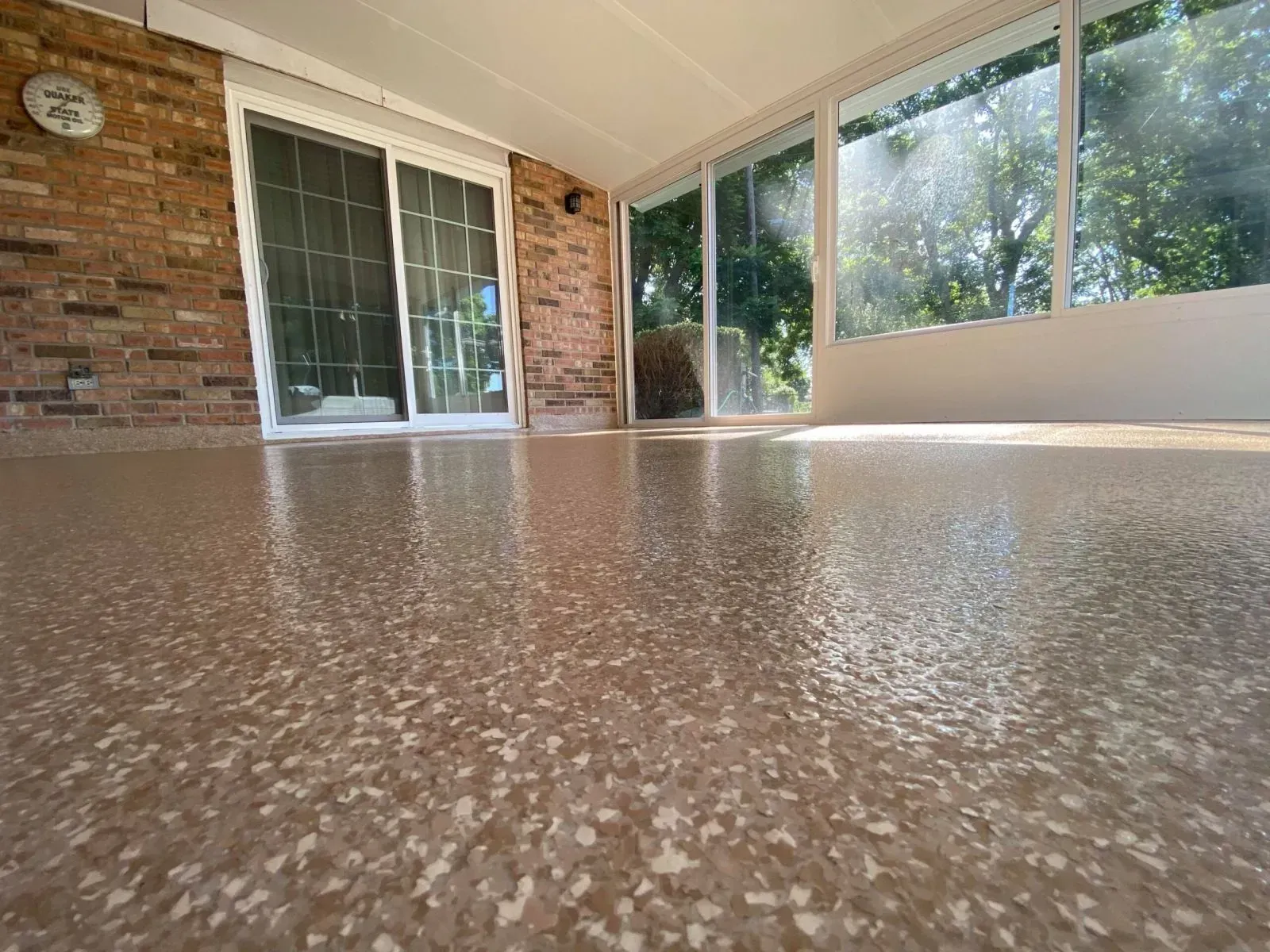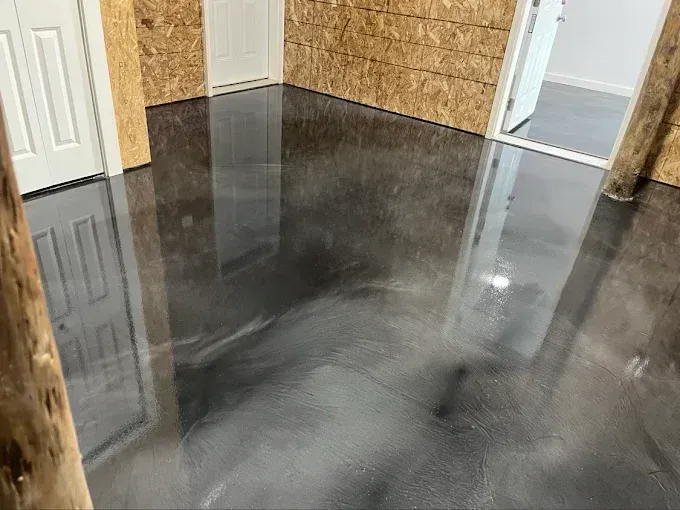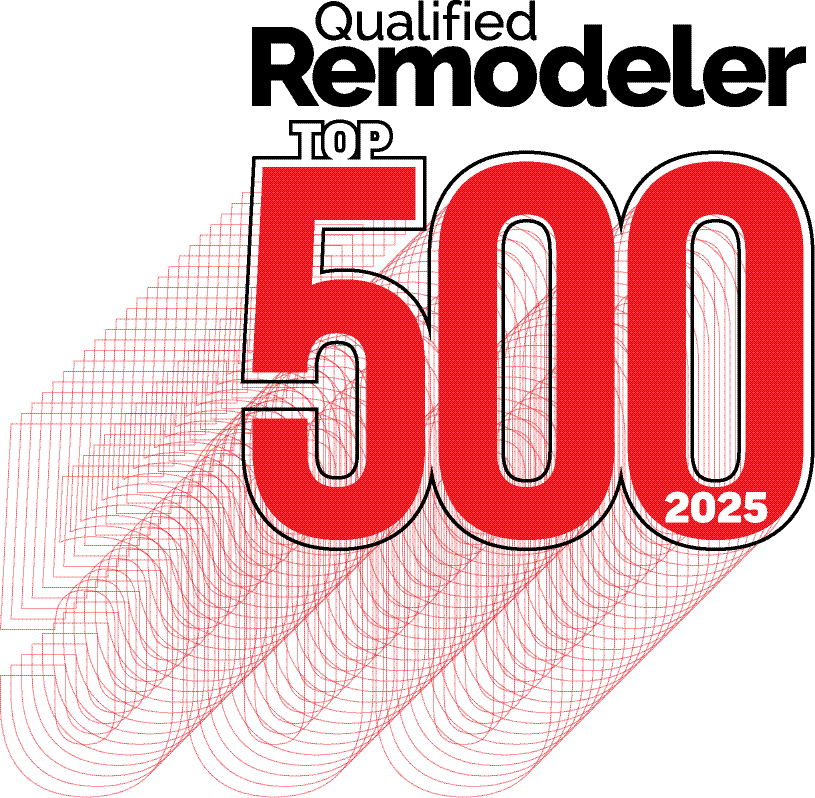Best Patio Floor Coating Options for Durable Outdoor Spaces
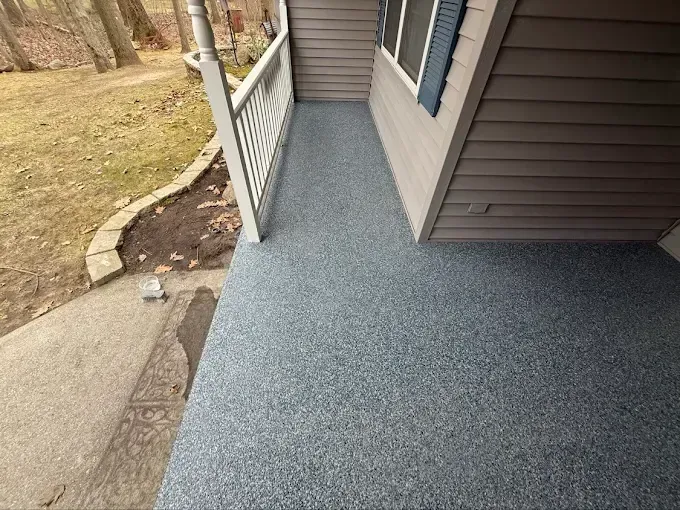
Durable patio coatings protect concrete with strong adhesion, abrasion resistance, and weather tolerance. They form a chemically bonded film, improving resistance to abrasion, chemicals, moisture, and UV. Epoxy, polyaspartic, and polyurea differ in cure time and UV performance, guiding selection based on traffic and sun exposure, with polyaspartic and polyurea often outperforming epoxy in sun-exposed or high-traffic patios, while acrylics suit light-use areas.
- Epoxy systems (including flake): High abrasion, good chemical resistance. Cure: 24–72 hrs (handle), 7 days (full). Lifespan: 5–10 yrs (indoor/limited UV).
- Polyaspartic coatings: Very high abrasion, good chemical resistance. Cure: 1–4 hrs (tack-free), rapid return. Lifespan: 7–12 yrs (excellent UV stability).
- Polyurea coatings: Excellent impact/flex resistance. Cure: Minutes to hours (fast). Lifespan: 8–15 yrs (durable in varied temps).
- Acrylic sealers: Moderate abrasion resistance. Cure: 1–4 hrs (touch-dry). Lifespan: 2–5 yrs (frequent recoat).
- Rubberized coatings: Good impact and slip resistance. Cure: 24–48 hrs. Lifespan: 4–8 yrs (exposure dependent).
Why Weather and UV Resistance Matter in Patio Coatings
Weather and UV resistance dictate a coating's color, gloss, and adhesion. UV exposure causes fading, yellowing, and polymer degradation. Freeze-thaw cycles and salt exposure lead to delamination or cracking. UV stabilizers and flexibility extend lifespan.
Best UV Stability for Sun-Exposed Patios
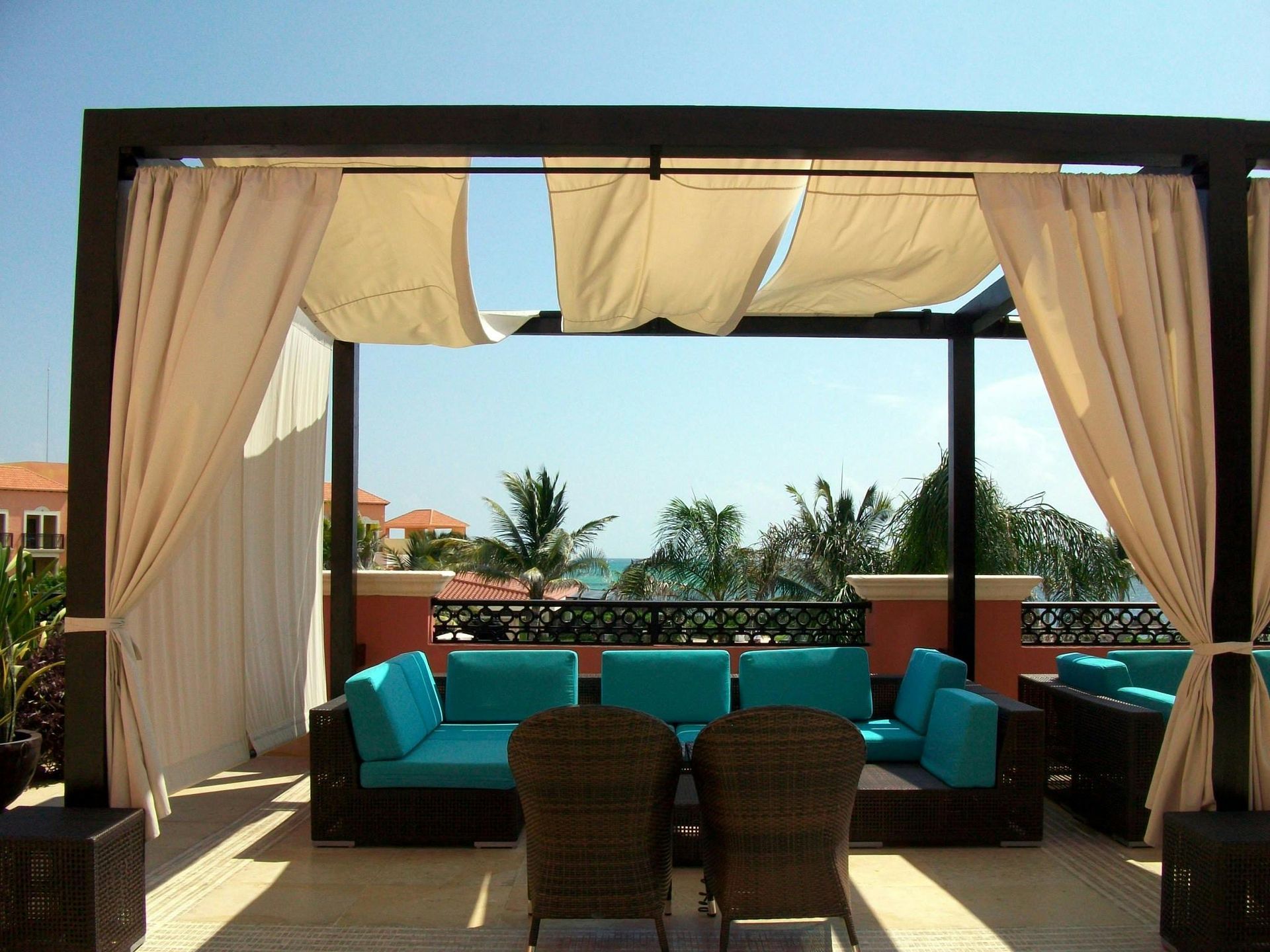
Polyaspartic systems and UV-stabilized polyureas are top choices for sun-exposed patios, maintaining color and gloss. Epoxy needs a UV-resistant topcoat to prevent yellowing. Routine cleaning and periodic topcoat reapplication preserve appearance and slow UV breakdown.
Patio Coatings for Extreme Weather Conditions
For freeze-thaw cycles, high humidity, and coastal salt, choose flexible, strongly adhesive, waterproofing coatings. Polyurea and polyaspartic excel due to their elastomeric properties, accommodating substrate movement. Proper substrate preparation is crucial for long-term adhesion.
Cost and Maintenance of Patio Floor Coatings
Upfront cost and ongoing maintenance determine the total cost of ownership. Lower-cost acrylics require frequent recoats; higher-performance polyurea/polyaspartic systems cost more initially but reduce lifecycle maintenance. DIY vs. professional installation depends on prep, equipment, and warranty. Improper prep or rushed curing shortens service life.
- Epoxy systems: Materials: Low–Moderate. Pro Install: Moderate (prep dependent). Maintenance: Reseal/topcoat every 3–5 yrs.
- Polyaspartic: Materials: Moderate–High. Pro Install: Higher (specialized). Maintenance: Topcoat/clean every 5–8 yrs.
- Polyurea: Materials: High. Pro Install: High (fast-install). Maintenance: Low frequency; inspect every 5–10 yrs.
- Acrylic sealer: Materials: Low. Pro Install: Low (DIY common). Maintenance: Recoat every 2–4 yrs.
- Rubberized: Materials: Moderate. Pro Install: Moderate. Maintenance: Repair/reseal every 3–6 yrs.
DIY vs. professional installation pivots on warranty and surface prep. DIY saves labor for small, simple patios but risks inadequate prep, improper mixing/curing, and shortened lifespan without professional moisture testing.Professional installation offers guaranteed prep, correct moisture testing, and a workmanship warranty, improving long-term value.
Patio Floor Coating Options for Safety and Aesthetic Appeal
Balancing safety and aesthetics means choosing coatings with slip-resistant textures or additives, alongside decorative options like color, flakes, or stains. Slip resistance comes from textured topcoats, aggregate broadcast, or anti-slip additives. Rubberized coatings offer comfort and a softer surface.
- Epoxy flake systems: Slip: High (broadcast). Aesthetics: Multicolor flakes, gloss. Comfort: Moderate.
- Polyaspartic/polyurea: Slip: Moderate–High (additives). Aesthetics: Smooth, high-gloss/satin. Comfort: Moderate.
- Acrylic & stains: Slip: Low–Moderate (textures). Aesthetics: Wide color/stain patterns. Comfort: Lower.
- Rubberized coatings: Slip: Very High. Aesthetics: Limited color/textures. Comfort: High (soft).
- Safety-focused finishes: Add aggregate broadcast or anti-slip additives to topcoats for traction near pools or steps.
- Decorative finishes: Use flake systems, tinted polyaspartic coats, or acid staining to mimic tile or stone affordably.
- Comfort options: Choose rubberized or textured coatings for play areas or patios used for bare feet.
How to Choose the Right Patio Floor Coating for Your Outdoor Space
Choosing the right patio coating requires matching performance to your climate, substrate, traffic, and aesthetics. This methodical selection reduces costly mistakes. Assess substrate type and moisture, traffic, UV exposure, and set a budget.
Key selection checklist to match coating to your patio:
- Climate: If high UV or wide temperature swings, prefer polyaspartic or polyurea.
- Traffic & Use: For heavy traffic or chemical exposure, prioritize epoxy with an appropriate topcoat or polyurea.
- Substrate Condition: Test for moisture and repair cracks before coating; flexible systems help move substrates.
In Summary
Selecting the ideal patio floor coating involves balancing durability, weather resistance, cost, and aesthetics. High-performance options like polyaspartic and polyurea excel in sun-exposed, high-traffic areas due to superior UV stability and flexibility. Epoxy coatings offer excellent abrasion resistance but require a UV-stable topcoat for outdoor use. Acrylics provide cost-effective decorative finishes, while rubberized coatings prioritize slip resistance and comfort.
Consider your climate, expected traffic, and desired look. Proper substrate preparation and professional installation are key to maximizing the lifespan and performance of any coating. For visual inspiration, explore ourproject gallery, or learn more
about us.
Ready to Transform Your Patio?
Discover the perfect durable and beautiful coating for your outdoor space. Our experts are here to help you choose the best solution.
Get a Free Quote Today!

